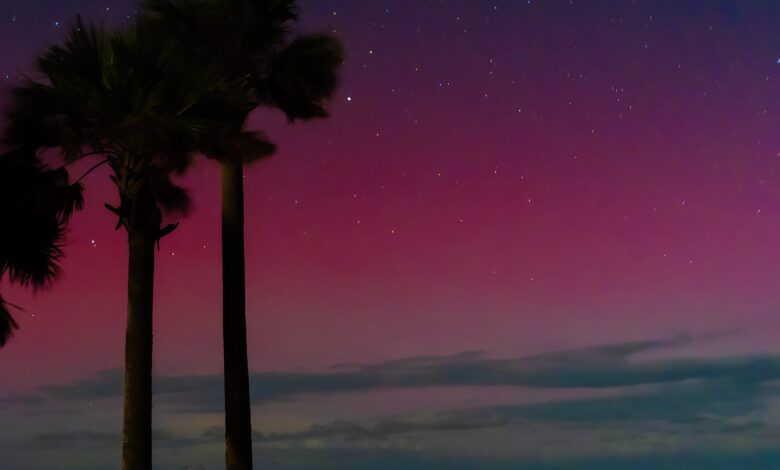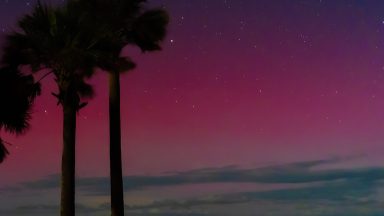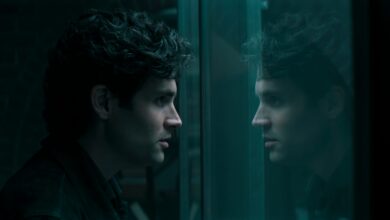Where and How to See the Northern Lights – Hollywood Life


View gallery
The sky could put on a dazzling show tonight. A strong geomagnetic storm is making it possible for the Northern Lights, typically reserved for Arctic skies, to be seen much farther south. Also known as the Aurora Borealis, this rare and colorful spectacle may light up skies across several U.S. states.
The National Oceanic and Atmospheric Administration (NOAA) has reported a strong G3-level solar storm on its Space Weather Prediction Center site. Since mid-2024, increased solar activity has made auroras visible in unusually southern locations — including, at times, parts of northern Florida. According to NASA, this is due to the sun reaching its “solar maximum,” the most active phase in its 11-year cycle.
Wondering if you’re in the path of tonight’s aurora? Here’s what to know about when and where to catch it.
What Is a Geomagnetic Storm?
Geomagnetic storms are a “major disturbance of Earth’s magnetosphere that occurs when there is a very efficient exchange of energy from the solar wind into the space environment surrounding Earth,” according to the Space Weather Prediction Center of the National Oceanic and Atmospheric Administration (NOAA). They form from “variations in the solar wind” which can alter the “currents, plasmas and fields in Earth’s magnetosphere,” per the website.
When severe geomagnetic storms occur, the NOAA warns that they could disrupt electrical power networks. This could, in turn, result in power outages.

Where to See the Northern Lights
Due to heightened geomagnetic activity, the Northern Lights may be visible across several parts of the United States tonight. The best chances for viewing are in northern regions, particularly in Alaska, northeastern Montana, northern North Dakota, northern Minnesota, northern Wisconsin, upper Michigan, and Maine. Moderate visibility may also extend into states like Washington, northern Idaho, Vermont, New Hampshire, New York, and Pennsylvania. Depending on local conditions, some southern areas — including parts of New Jersey — may also catch a rare glimpse of the aurora.
For optimal viewing, find a location away from city lights with a clear, north-facing view. Keep an eye on local weather conditions, as cloud cover can obstruct visibility.
What Time to See the Northern Lights
The best time to view the Northern Lights tonight is between 10 p.m. and 2 a.m. local time. This window offers the darkest skies and the highest likelihood of auroral activity.
Source link






